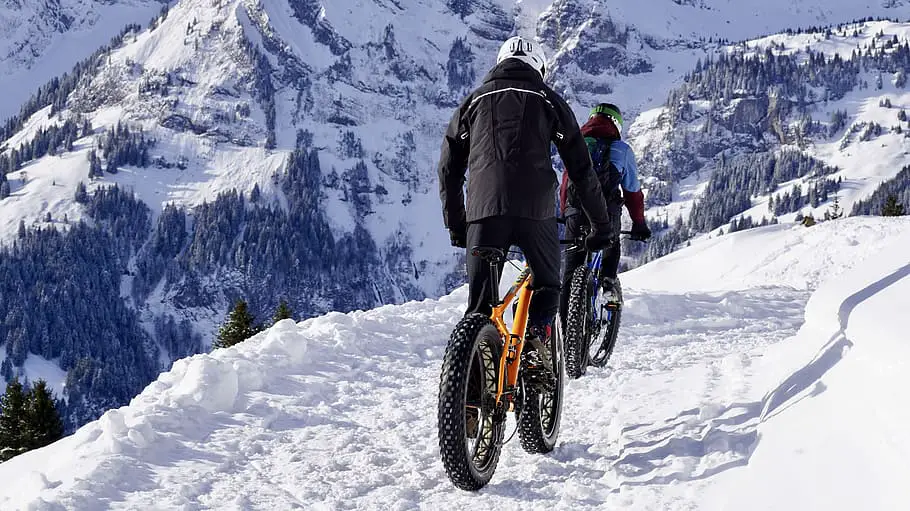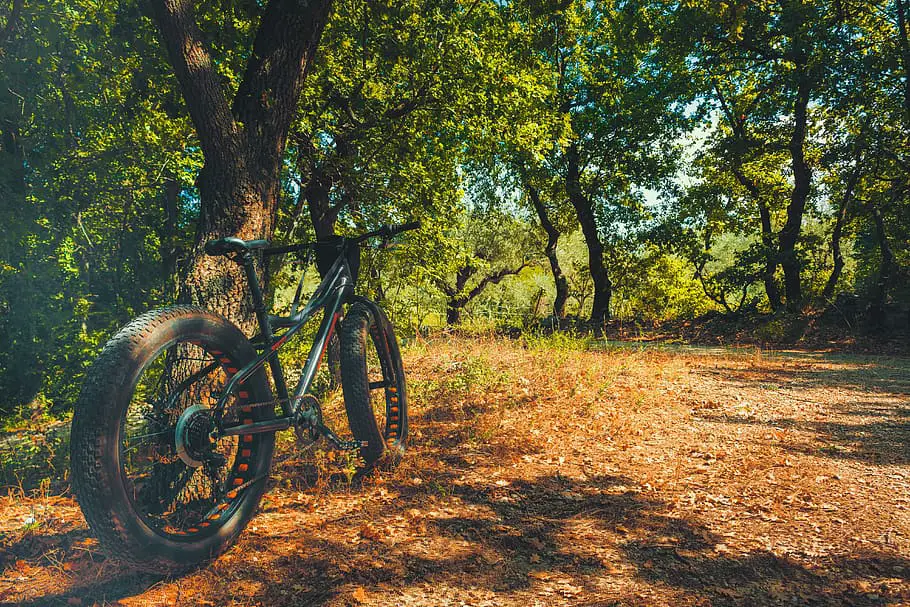Fat Tire Bike vs Mountain Bike
A fat tire bike has become increasingly popular among cyclists who want something between a road bicycle and a traditional mountain bike. These bikes offer several advantages over their traditional counterparts including better traction and stability while riding through rough terrain. They also tend to weigh less than full-suspension mountain bikes.
However, these bikes aren’t without disadvantages either. Fat tires are not as aerodynamic or lightweight as hard rubber tires found on most other bicycles. Also, the larger contact area of the fat tires can make it more difficult for riders to control speed when climbing hills.
In this article we will discuss the benefits and drawbacks of fat biking, as well as how you can get started with your own set up.
What is a Fat Bike?
A fat bike, also known as an all-terrain bicycle or ATB, is a type of hybrid bicycle that combines the stability and maneuverability of a traditional road bike with the ability to travel over rough terrain. The term “Fat” refers to its tires which are typically wider than those used on regular bikes. A typical setup will have 700c x 47mm front wheel and 650b x 48mm rear wheels. This combination gives the rider greater ground clearance and allows them to ride in any weather conditions.
Wide tires are designed to distribute the weight and rider over a larger surface area. If your roads are smooth or dry then this may not matter as much. However, on rough surfaces like gravel or dirt, it will help with traction.
The soft rubber of the bicycle's tires provides more comfort and less resistance to movement. The softer tires also provide better traction on wet surfaces or when riding in mud. This is especially important if you are going downhill as it will help prevent your wheels from slipping out from under you. On the other hand, hard-tire bikes have higher pressure which makes them faster but they can be harder to control because there is no give in their treads. They may not handle well on rough terrain either.
History of the Fatbike
Ray Molina and the Chevron Bikes team were pioneers in developing the first fat bikes back in 1995. Their design was based on snowmobile technology where the wide tires would allow the vehicle to move easily across ice and snow. In fact, one of the earliest models had only two gears instead of three! Since then many companies have developed similar designs using different materials such as carbon fiber composites. Today, fat bikes come in various sizes ranging from 29 inches to 27 inches. Some even go as far as 26-inch wheels. There are now hundreds of manufacturers producing fat bikes around the world.
What are the differences between a fat bike and a mountain bike?

There is a difference in the size of their tires.
The difference between a fat tire bicycle and a mountain bike is the size of their tires. A mountain bike has larger, knobby-treaded tires that are designed to grip on rough terrain while providing stability for riders who want to go fast or climb steep hills. The large treads provide traction in all conditions, but they also make it difficult to ride smoothly over smooth surfaces like pavement.
A fat tire bicycle uses smaller, wider tires than those found on a mountain bike. These tires are usually made of softer material so they don't need to hold up to the rigors of rugged trails. Because these tires do not require as much support, they offer superior maneuverability and speed compared to traditional mountain bike tires.
Fat bike frames need to be extra clearance.
The fat tires on a fat tire bicycle are not designed to be ridden over obstacles. They have no clearance under the frame and will rub against anything that is in their way, including your body if you fall off of it. This can cause serious injury or even death. If you ride a fat tire bicycle, make sure there is nothing underneath them when they roll by.
Mountain bikes are designed for obstacles unlike a fat tire bicycle, a mountain bike has large knobby tires that clear rocks and roots without rubbing against them. These types of tires are usually made of steel or aluminum so they do not wear down quickly. Most mountain bikers use these bikes exclusively for trail rides since they offer superior handling and performance compared to a fat tire bicycle.
Mountain bikes are generally lighter than fat-tire bikes because they use smaller wheels that roll faster in loose terrain. They also tend to weigh less due to their lower frame design.
Fat Bike Bottom bracket and Crank Spindle
The bottom bracket is the part of a bicycle that connects to your pedals. It's also where you'll find the crank spindle, which attaches to the crankset. The BB shell has an inner race with bearings in it; this fits into the outer cup on top of the frame or fork. This allows for smooth rotation of the wheel relative to the frame.
Mountain bikes have square-taper steerer tubes, while fat tires often feature round ones. Rounder tube shapes allow for greater flexibility and better handling characteristics. Square tapers tend to work best at higher speeds because they're stiffer and less prone to flexing.
The Benefits of Fat Tire Bikes

Better traction than ever before
A fat tire bike has better traction than a traditional mountain bike. Fat tire bikes offer many advantages over traditional mountain bike models. They can be ridden off-road, but are designed specifically for riding trails. Their lower pressure tires allow them to grip rough surfaces such as rocks and roots. As a result, they tend to be faster and easier to control when compared to other types of bicycles.
Fat bikes have wide fat tires that provide better balance. It's an advantage for people who want to advance their riding skills. You won't be afraid to fall because these bikes cruise at a slower pace if you have bigger muscle power.
Lightweight and flexible frames
The carbon frames are lightweight and have the right weight to keep you on the road. If you fall off of one of these bikes, you don't need to worry about broken bones. Carbon fiber is strong to ensure long-lasting service life.
Extreme riding is implied by increased floatation.
Fat bikes have bigger tires that allow them to ride over all types of terrain, including snow and sand. You can ride a fat tire bike in the middle of winter. There are many biking opportunities with this bike.
Unique geometries
The type of bike you go for depends on how steep and rugged your trail is. The geometries of fat bikes make them excellent for plowing and riding. These bikes are different from mountain types because of the absence of super slack angles. A lot of attention is given to frame design and flexibility. When you choose a fat bike, you get more bang for your buck.
They are not only good for recreational purposes, but they are great for commuting too. If you live close enough to your destination, then why not take the scenic route? With a fat bike, you will enjoy the scenery along the way without having to deal with traffic jams.
It's beyond expectations to be comfortable.
Fat bikes are more comfortable than any other type of bike. Unlike regular mountain bikes, which require constant pedaling, fat bikes do not require it. Instead, riders use their legs to steer the bike. Because there's no need to pedal constantly, you'll find yourself enjoying longer rides.
You also don't have to worry about getting sweaty hands when using a fat bike. Your fingers stay dry since they aren't exposed to direct sunlight like normal mountain bikes. This means that you can easily hold onto handlebars while going downhill or uphill.
You can even carry heavy loads on a fat bike. Since there isn't anything else holding up the front wheel, you can load heavier items into the back rack.
There are so many reasons why people love fat bikes. Some prefer them due to their unique features. Others simply want something new and exciting to try out.
Conclusion
If you're looking for a fun and adventurous experience, then consider buying a fat bike. It has become very popular among bikers who seek adventure. As mentioned above, there are several benefits associated with owning a fat bike. However, before making a purchase, check if you meet the requirements needed to own such a bike.
Having a fat bike allows you to explore places where you would normally never venture. Whether you plan to travel around town or hit some trails nearby, you won't regret purchasing a fat bike.
If you have a story to tell, please let us know in the comment section.
